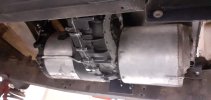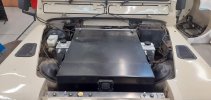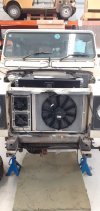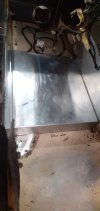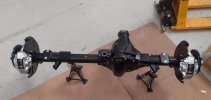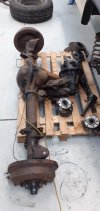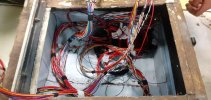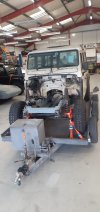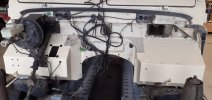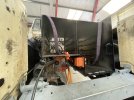E~FENDER
Active Member
After a few requests I thought it might be interesting, if nothing else, to setup a thread to follow the build and ownership of our 110 EV conversion project. There are a couple of other conversions on Landyzone, but these seem to be Freelanders, and hats off to those guys, they are far more skilled than I. In fact, very little of this work is being done by me – none of the conversion aspect.
I’ve owned Defenders for 12 years but fell for them when I went to pick up a Series IIA with my father back in the early ‘90s. My first, was picked up while we lived in Uganda; a lovely 300tdi that we drove up and down the country from the northern most tip; Kidepo National Park, down to the very bottom on the border with Rwanda. We even took it him ('Stanley') on honeymoon around Kenya & Tanzania and there were tears when we had to sell it on, on our return to the UK.
Jump forward a number of years and a few kids later, the previous 90 XS ('Mungo') made way for a 1989 V8 assembled in South Africa and imported to the UK in 2021. We took possession shortly after. But with a growing concern over the climate and a personal turmoil over the impact of running a 3.5 litre petrol engine, we put down a deposit with a firm in mid-Wales to convert it to full electric. I had considered a number of options leading up to this, including a hybrid hydrogen conversion (Ulemco and Ultimate Cell), but ultimately, it seemed the best option was full EV with rapid CCS charging.
Electric Classic Cars have a history of converting classic cars to electric, including a number of Defenders (they did a special edition for Selfridges and now have a drop-in kit for some select garages). Let’s be honest, it isn’t cheap, and even with the savings on road tax, servicing and fuel costs over the next 15-20 years, we probably won’t reach parity with maintaining the V8. But, it’s hard to put a price on adventure and invention, and I personally think this prolongs the life of this classic well into the age of electric.
Now, I’m sure this isn’t everyone’s cup of tea, but if you’ve made it this far and remain interested, my plan is to walk people through the process of the conversion and on through to its use, warts and all. If you’ve any questions, feel free to pop them over and I’ll do my best to answer them.
I’ve owned Defenders for 12 years but fell for them when I went to pick up a Series IIA with my father back in the early ‘90s. My first, was picked up while we lived in Uganda; a lovely 300tdi that we drove up and down the country from the northern most tip; Kidepo National Park, down to the very bottom on the border with Rwanda. We even took it him ('Stanley') on honeymoon around Kenya & Tanzania and there were tears when we had to sell it on, on our return to the UK.
Jump forward a number of years and a few kids later, the previous 90 XS ('Mungo') made way for a 1989 V8 assembled in South Africa and imported to the UK in 2021. We took possession shortly after. But with a growing concern over the climate and a personal turmoil over the impact of running a 3.5 litre petrol engine, we put down a deposit with a firm in mid-Wales to convert it to full electric. I had considered a number of options leading up to this, including a hybrid hydrogen conversion (Ulemco and Ultimate Cell), but ultimately, it seemed the best option was full EV with rapid CCS charging.
Electric Classic Cars have a history of converting classic cars to electric, including a number of Defenders (they did a special edition for Selfridges and now have a drop-in kit for some select garages). Let’s be honest, it isn’t cheap, and even with the savings on road tax, servicing and fuel costs over the next 15-20 years, we probably won’t reach parity with maintaining the V8. But, it’s hard to put a price on adventure and invention, and I personally think this prolongs the life of this classic well into the age of electric.
Now, I’m sure this isn’t everyone’s cup of tea, but if you’ve made it this far and remain interested, my plan is to walk people through the process of the conversion and on through to its use, warts and all. If you’ve any questions, feel free to pop them over and I’ll do my best to answer them.
